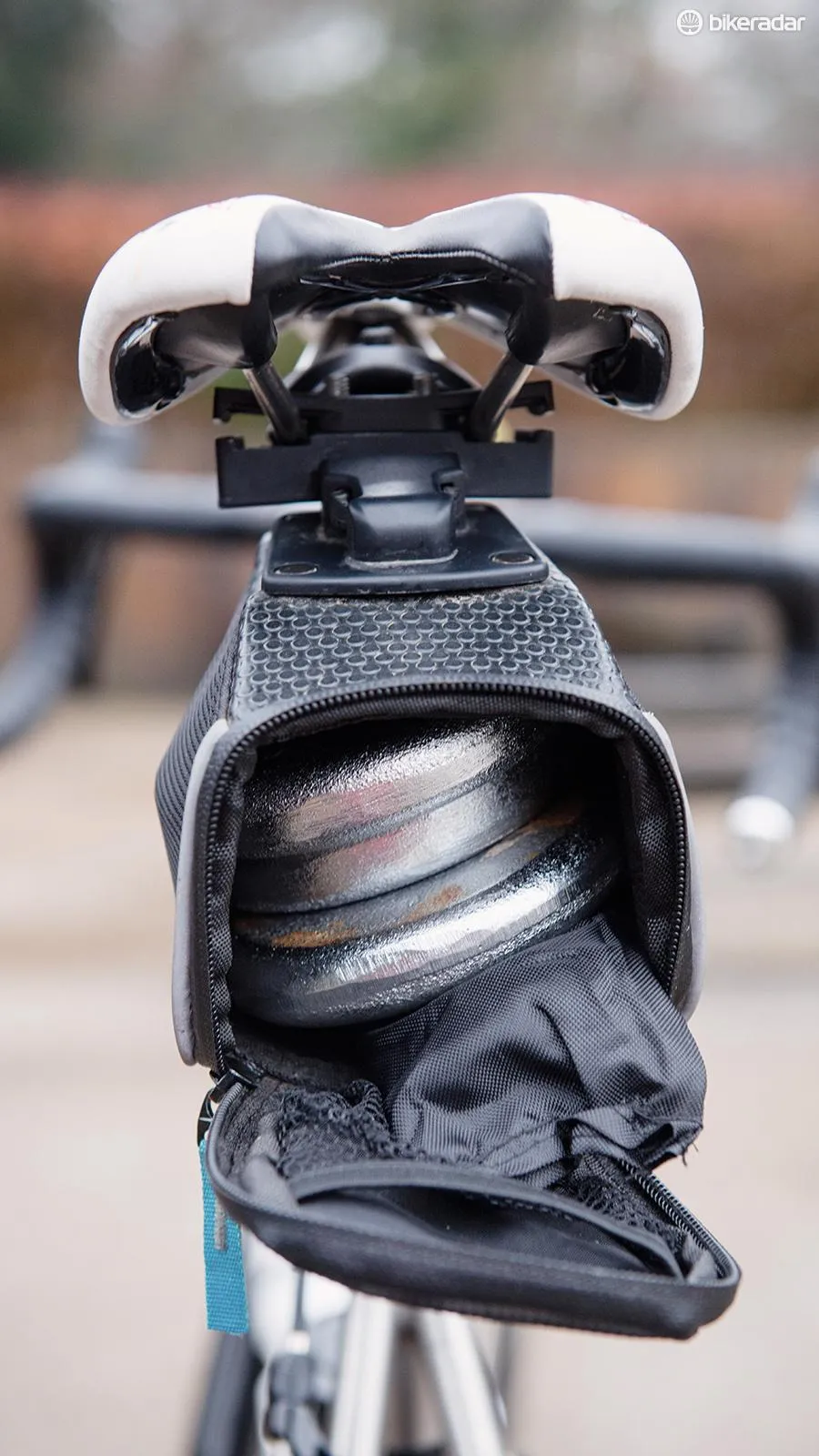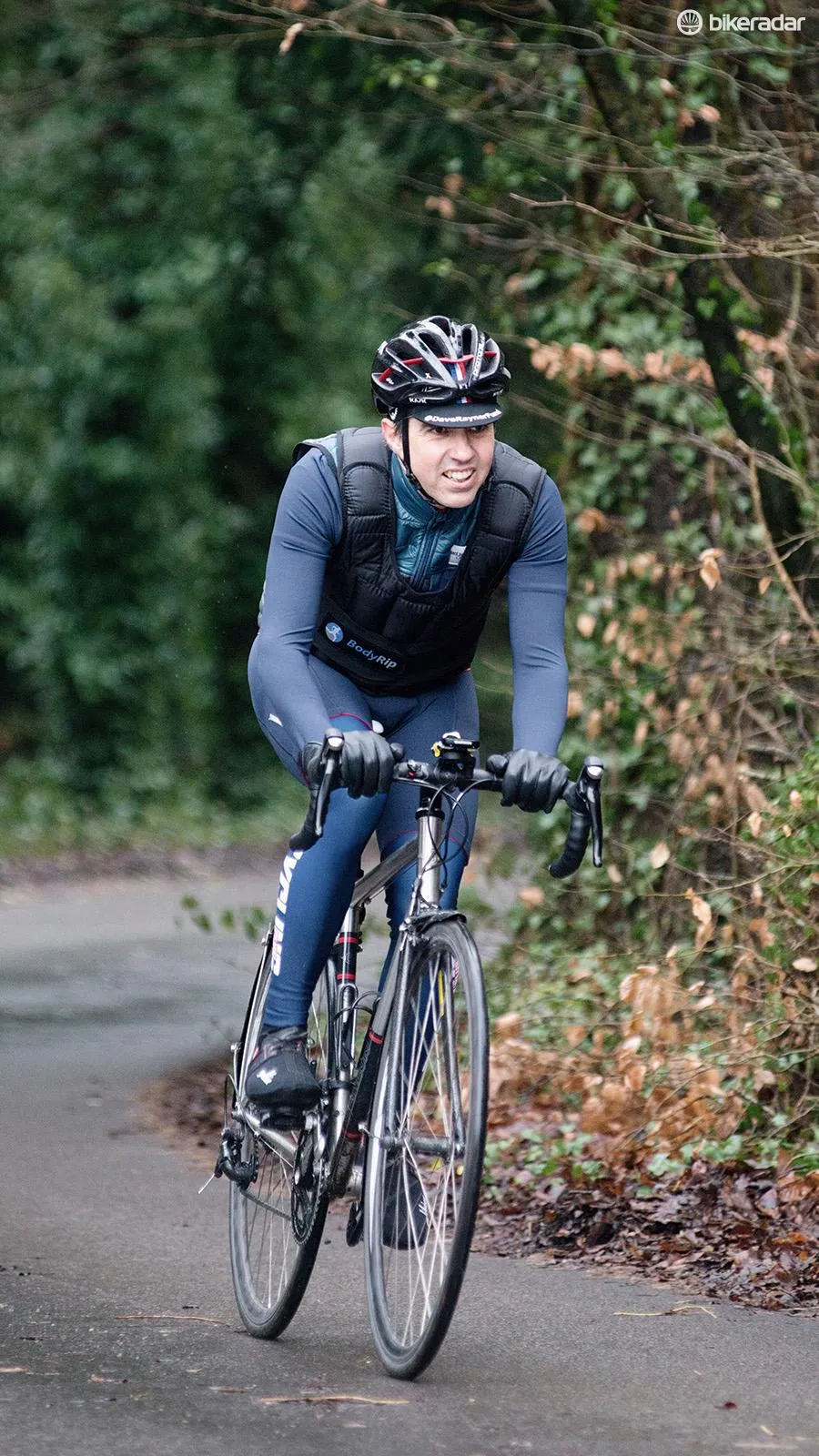The wind is cold, the rain hurling in my face is even colder, and about the only upside to the frigid January temperatures is that I’m too numb to feel the blood oozing out of my ear. A class of bewildered schoolchildren and their teachers on a nature ramble are looking askance at us and it’s all I can do not to put on a Christopher Lloyd voice and yell “It’s a science experiment!”
We’re on a local climb with one bike, five kilos of lead weights, a five kilo weighted vest and a very cold scientist, Paul Hough, who leads the physiology team at St Mary’s University and wrote Advanced Personal Training: Science to Practice.
In keeping with his work in that book, we’re taking some of the science of climbing out of the lab and onto the road where it will actually be applied. In the run up to a hilly event such as Velothon Wales, it’s easy to become obsessed with saving weight for the climbs, but unless you have a body fat percentage in single figures and a bike that you needed a mortgage to buy, there’s a good chance you’ll face the cyclist’s dilemma: with limited time and resources available, is it better to lose weight from me or the bike?
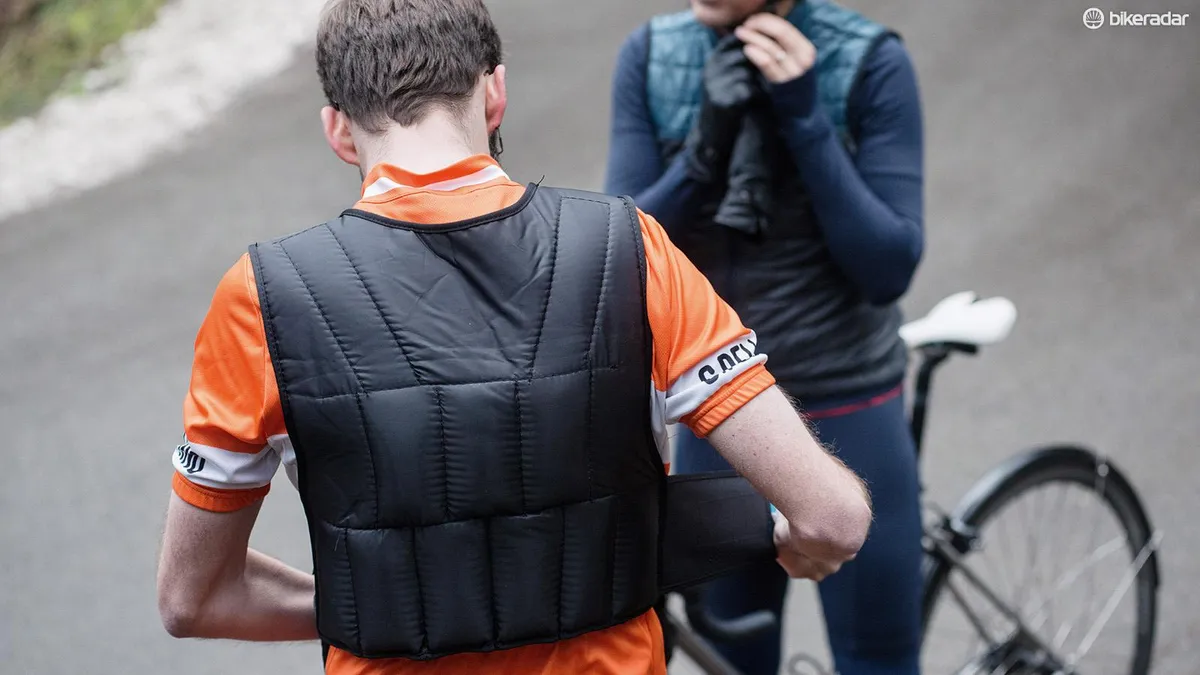
Cycling Plus deputy editor Paul Robson and I will take turns to dash up the 1.5km climb at rather more than our comfortable pace, equipped with heart rate monitors, power meters and a stopwatch. My first run will be with the weight vest, after which Paul will do the same ride on a bike adorned with kilo weights in the bottle cages and frame bag.
After that it will be my turn with the weighted bike and his turn with the vest. The tests are done in that particular order so that excess spikes in our blood lactate will be highlighted — there will be a natural increase in blood lactate in our second runs due to the lactate generated by the first climb, but by making sure that we’re not working in identical patterns we’ll be able to see if there are ‘spikes’ rather than natural climbs in our levels, and relate them back to the load being carried.
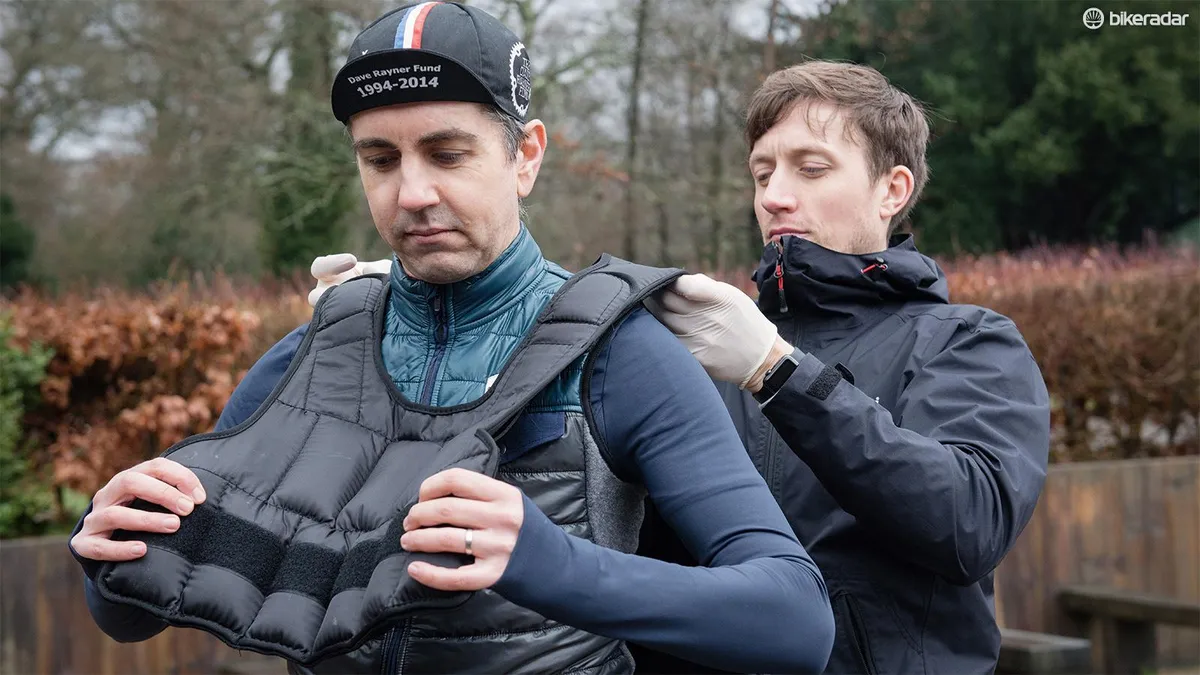
Paul Hough will be taking blood samples from our earlobes immediately after each climb and relating them to the other data. So our rides aren’t influenced by watching power figures, the Garmin is taped up to hide the stats that Hough will use to analyse our performance.
Armed with a roll of biohazard tape I head down the hill to prepare the course, marking a ‘start line’ 1.6km from the top and a ‘warm-up’ line a few hundred yards further down, allowing us to shake off inertia and start turning the gear over before hitting the second mark and starting to go harder.
Resistance is futile
From the moment I start to push it’s apparent that something is off kilter. This is a familiar climb, and although I’m pushing a bit harder than I normally would, I’m not seeing as much of a return on the effort as I’d expect. It feels like there’s just a tiny bit more resistance than usual, as if the air were denser.
As I round the first bend I knock it down a gear and find a rhythm at a slightly slower cadence than usual. I’m not labouring over the climb, I’m making a sustainable effort, but I’m slower and less comfortable. As I approach the next bend I become aware of an ache in my lower back, and as I round the corner I find myself unexpectedly puffing and blowing, my ribs stretching the straps of the weight vest with each inhalation.
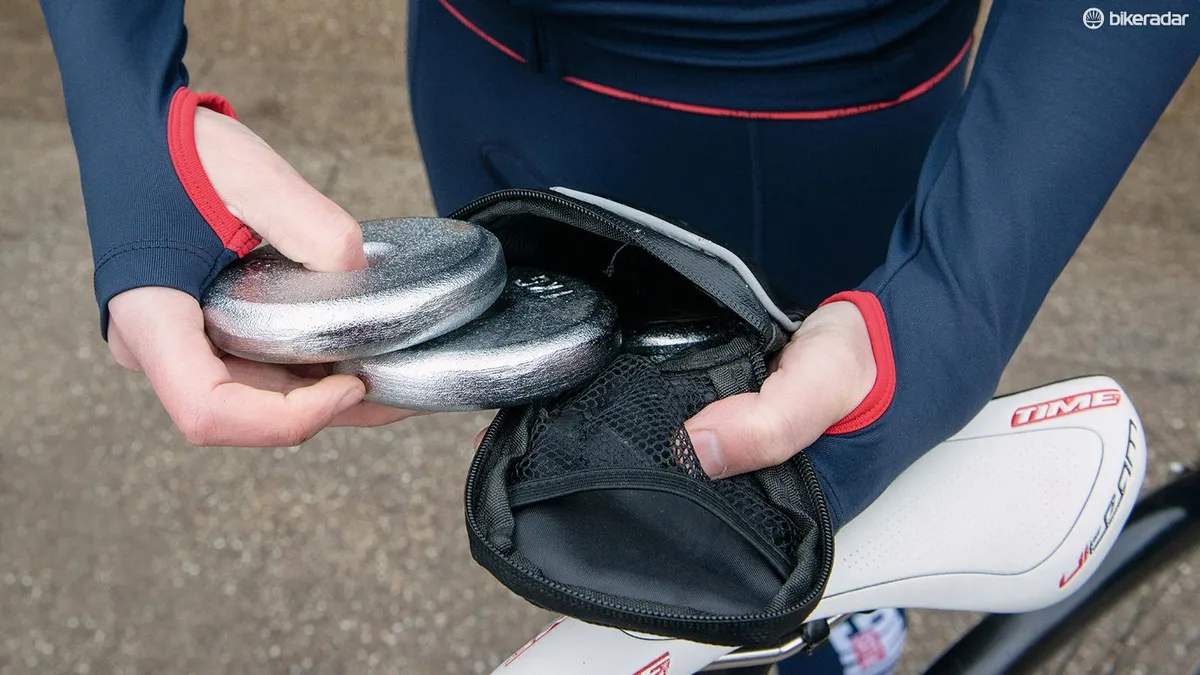
It’s not a terrible experience, and certainly not one that would stop me if I were in the middle of a long ride, but as I come to a halt at the top of the hill I’m aware that a climb that I usually take great pleasure in was no fun at all.
As Paul Hough scratches a drop of blood from my ear and notes down the readings from the Garmin, I explain to Paul Robson where to find the warm up and start markers, and he begins loading the weighted bags and bidons onto the bike for his first ascent.
It’s slightly embarrassing how quickly he’s back in the picnic area that’s serving as our impromptu phlebotomy lab. His ascent has been two minutes and 37 seconds faster than mine. The question is, how much is that down to our respective difference in fitness, and how much is due to the difference in where we’ve carried our extra 5kg?
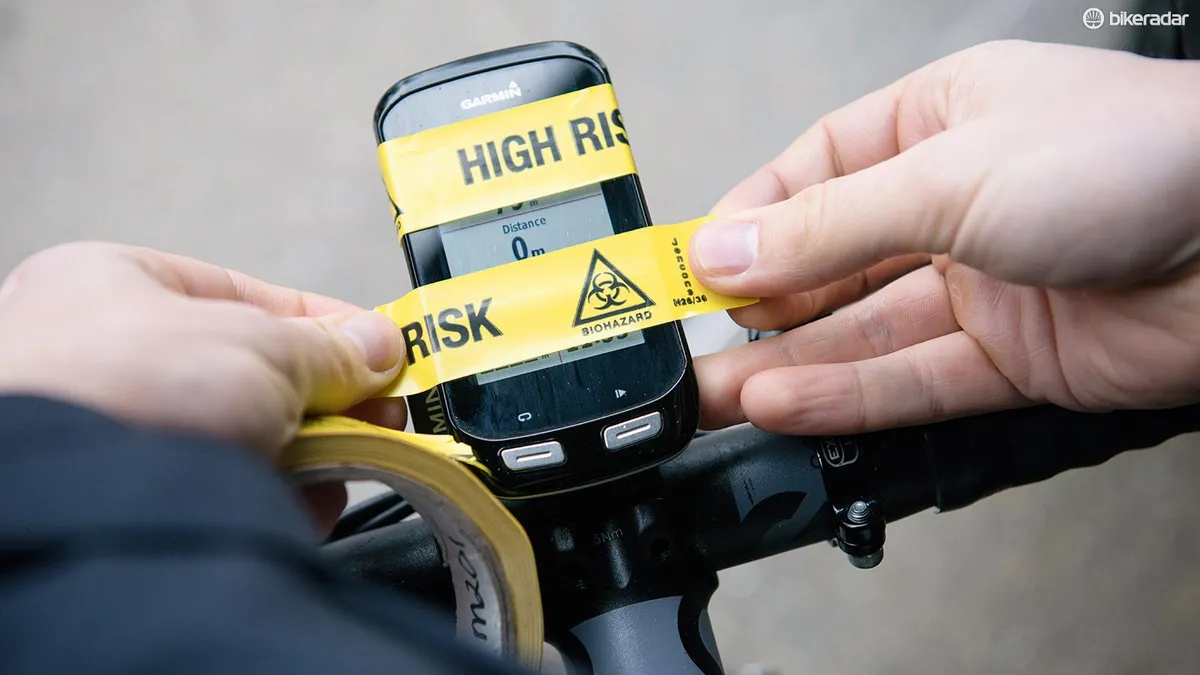
Having discarded the vest, swabbed my ears and remounted the bike, I start my second run. The difference is instantly apparent. The weighted bike is stodgier, with the back wheel feeling fixed in place while the front roves back and forth, but for all that it’s marginally less nimble, it’s no less sprightly. I’m quickly up to speed, spinning comfortably, my cadence a little higher, my speed a little faster, and all for less effort.
Unlike the first ascent, the climb is fun again. Not unlike the first run, Paul proceeds to smash my time to bits on his second run. A second round of ear-piercing follows and then, in true cyclist fashion, we head to the cafe to eat cake and talk about our ride.
Lactate rising
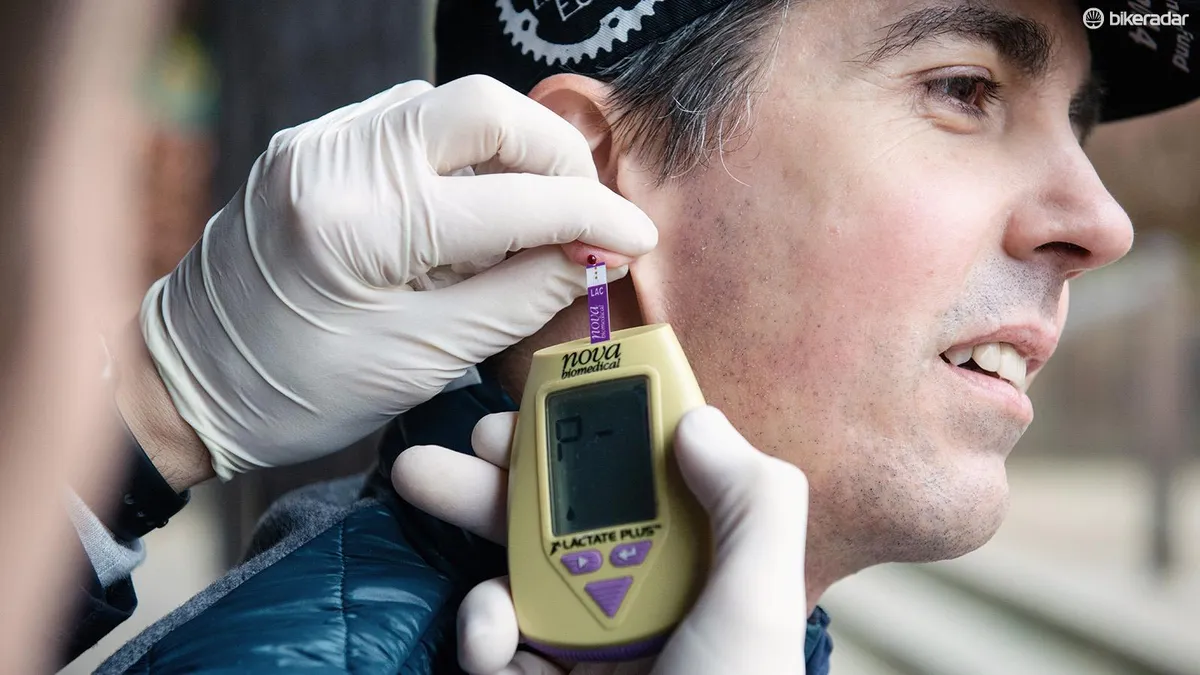
The first thing we discover is that the lactate tests imply (but don’t prove) that any build up is natural, rather than affected by the location of the weight. My figures climbed from 5.6mmol/L to 10.6mmol/L between the first and second rides, while Paul’s went from 3.6 to 11.3, despite the tests being carried out in the opposite order.
“Your vest score was lower than with the bike” says Hough, “and with Paul it was the opposite. That’s why we do a counterbalance — if you’d both gone with the vest or bike first, it might have looked like the spike related specifically to that. On a cold day like this, the blood flow is less, so the lactate isn’t shuttled back into the muscle and recycled.”
Poring over the data, it becomes apparent that there’s comparatively little in it. Regardless of whether the weight was on the bike or the body, our average power outputs never varied by more than a few watts, and our average heart rates were broadly similar for both climbs. The weighted bike run saw my cadence increase by about 9rpm, while Paul’s barely varied between runs, increasing by just 3rpm.
Matter over mind?

What is noticeable is that in both cases the climb with the weight on the body was faster than with it on the bike, in my case by a statistically insignificant two seconds, but in Paul’s case by 16 seconds — having extra weight on the bike apparently costs him around a second every hundred yards of climbing.
For a lot of cyclists that last point would represent the only part of the data that mattered, and yet it throws into sharp relief the contrast the tests revealed: “It was much harder and less enjoyable with the vest on,” says Paul. “I definitely noticed the weight more when it was on me, even though I was technically faster. I noticed the weight on the bike, but when the weight was on me the bike felt light and I felt much worse.”
The placement of the weight has comparatively little effect on the physiological numbers, seems to have a small effect on the speed, but has a huge effect on the perception of the effort.
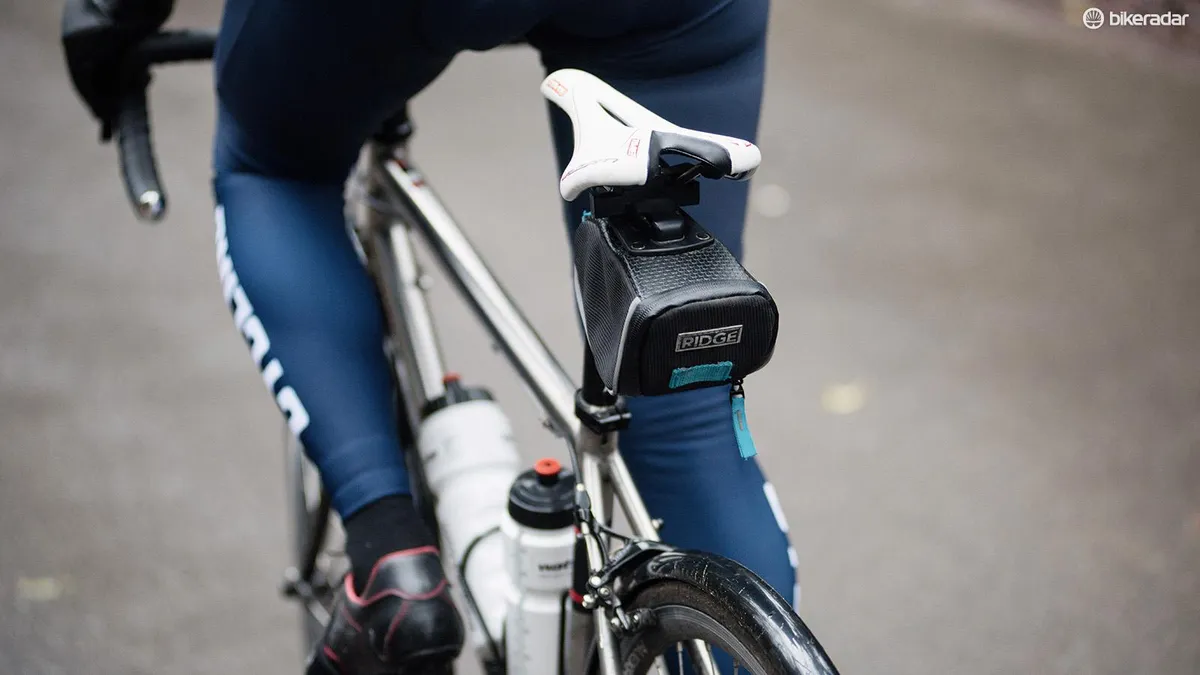
Both Paul and I had a miserable time lugging bodyweight up the hill, but were perfectly happy when dealing with extra bike weight. Over the course of a long, hilly event, avoiding that misery might be worth more than potentially being a little bit faster, especially as that misery took a physical form — during my bodyweight ride I had a burning ache in my back, a discomfort Paul noticed slightly later too.
“That’s the ergonomic effect of carrying weight,” explains Hough. “Often, if you’re overweight you’re more likely to have lower back problems, especially when cycling, because in that position there’s more load on the spine. Also, if you’re an overweight cyclist it’s not just about the weight, it’s about surface area. If you’re carrying a lot more body fat you’re less aerodynamic as well. That’s an additive effect: not only is your power-to-weight ratio lower, but you’ve also got more drag, so that’s going to make you slower as well.
Body first
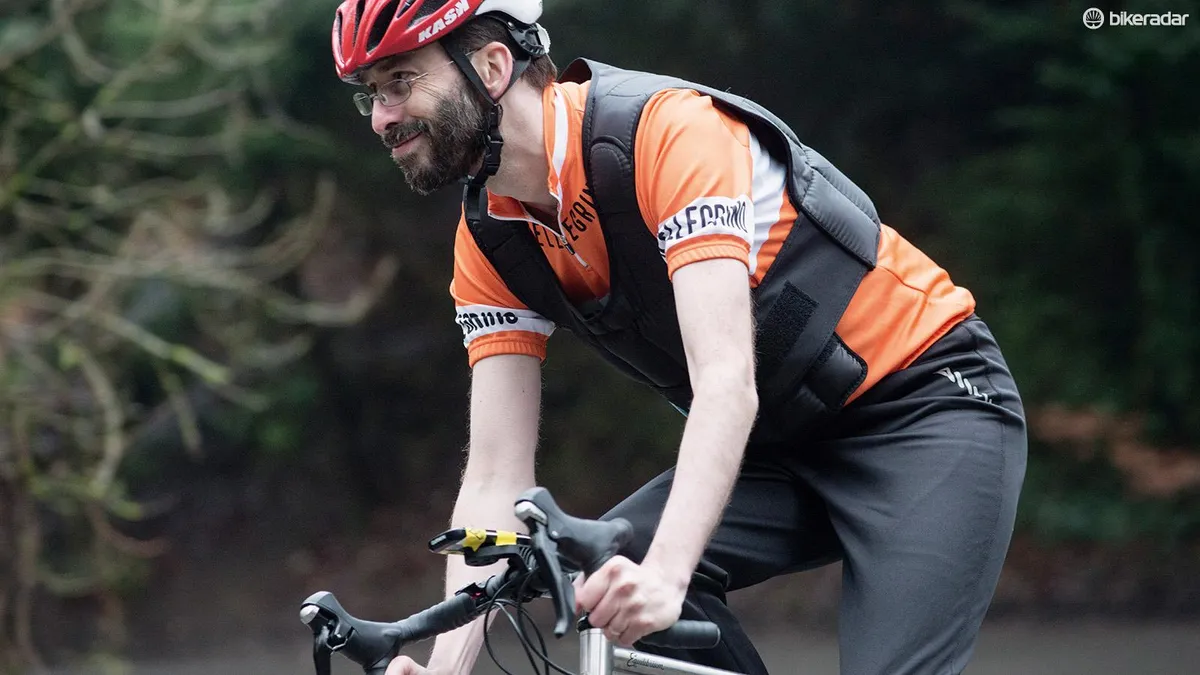
“Depending on what your body fat percentage is, I think it would be better to lose weight off yourself rather than focus on the bike too much. It’s a bigger investment in both time and effort, but over the long term it’s a better price to pay. Less drag, better long-term health outcomes, and it can improve your training by improving your vitality.
“Often when you try to lose body fat you clean up your diet, and with a better diet training adaptations can be better as well. The process of losing body fat has all sorts of little additive benefits.”
That’s all well and good, but there are very few cyclists who aren’t also bike-fetishists, and hearing a physiologist suggest that there’s more benefit in working on your body than your bike can be disheartening, but fear not — according to Hough losing weight off the body can justify buying a lighter bike...
“We’ve tested people in the lab who come in with ceramic bearings and two-grand wheels, and it’s obvious that they could have lost a couple of kilos to make those same gains, but if you get your body in its best shape possible, the benefits when you move to a better bike with better components will be exponential.”
Lighten yourself
- Fasted rides: Periodised nutrition means matching what you eat to riding intensity. A day of intervals needs to be fuelled with carbs, but a gentle three-hour ride can be done in a fasted state to burn fat.
- Go low carb, high fat: Studies suggest that the LCHF diet reduces power and can affect your ability to burn carbs, so it’s not ideal for races or sportives, but it can help you lose weight in the off season.
- Skip the cake stop: The traditional cyclist’s cake stop only counts as refuelling if you haven’t been pounding gels, energy drinks and malt loaf during the ride itself.
Lighten your bike
- Upgrade your wheels: Making your wheels lighter is a win-win, as it’s not just saving weight that you have to lug up hills, but rotational weight — weight that you have to expend effort to make it move. By swapping to a carbon wheelset, with lightweight tyres and latex tubes instead of butyl you stand to make a gain that’s more than just the sum of the several hundred grams saved.
- Cash for carbon: Unless you ride a very pricey bike, there’s a good chance you can find something on it in alloy that could be replaced with carbon fibre. Saddle rails, threadless stems, bottle cages, cranks and seatposts are the usual suspects to be swapped for something lighter.
- Careful cuts: The days of drilling out are gone, but you can still locate excess material to remove. The seatpost and steerer tube both have the potential to be trimmed, as long as you a) consult an expert on how much can safely be removed and b) have no plan to adjust your riding position again.
This feature was supported by Velothon Wales.
